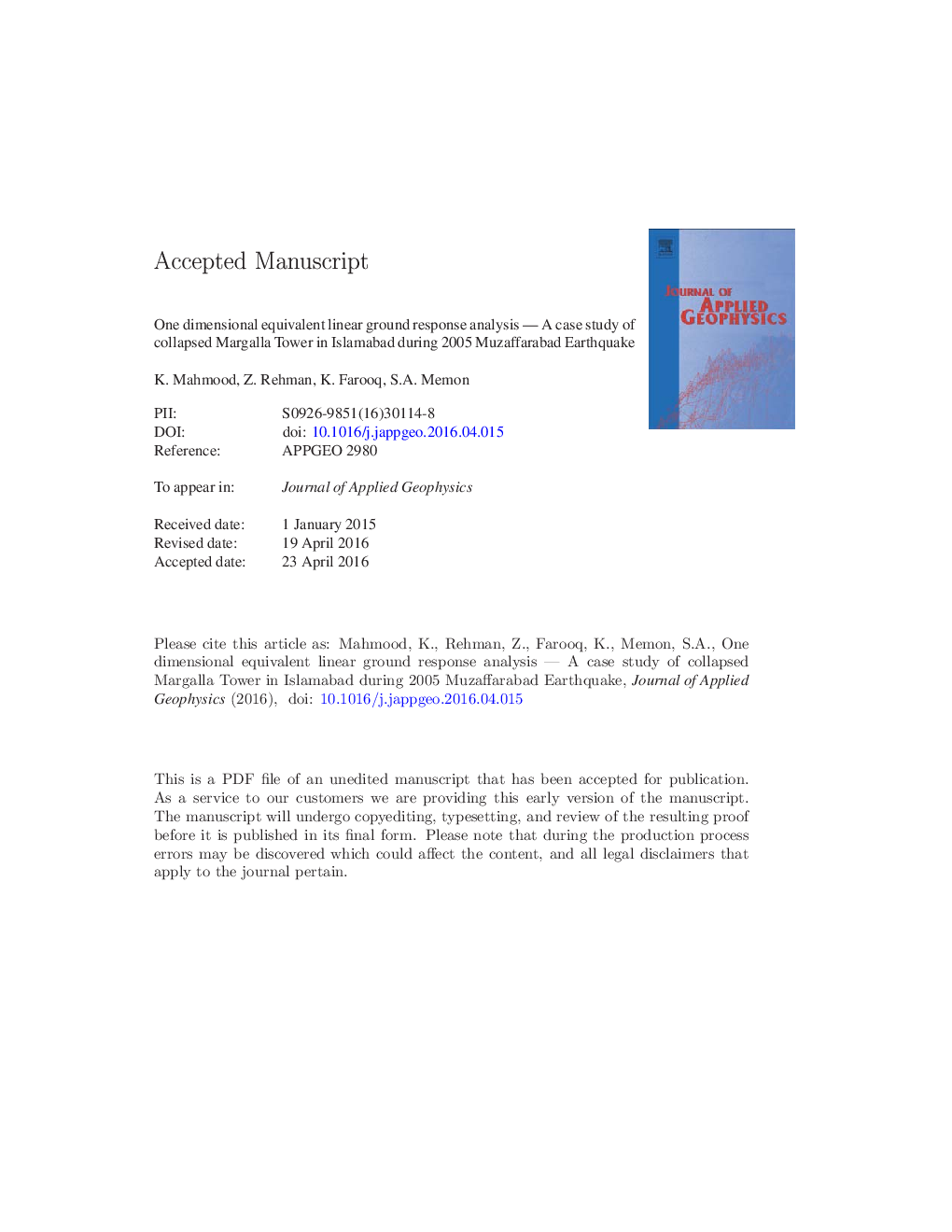| Article ID | Journal | Published Year | Pages | File Type |
|---|---|---|---|---|
| 6446959 | Journal of Applied Geophysics | 2016 | 36 Pages |
Abstract
One dimensional equivalent linear ground response analysis was conducted in the Margalla Tower building in Islamabad, which collapsed during 2005 Muzaffarabad Earthquake. The analyses were conducted in DEEPSOIL software, without considering the effect of ground water table. The input subsoil data were selected from laboratory and field tests conducted for the site with bedrock at a depth of 21Â m as per site condition. The field and laboratory testing data showed that the subsoil beneath the Tower site was silty clay to lean clay according to the unified soil classification system. Four different accelerograms with PGA values of 0.17Â g, 0.15Â g, 0.22Â g and 0.21Â g, compatible with the earthquake in the target area were applied at the bedrock. The surface response spectra showed that, except the Accelerogram-1 all other three were amplified near the fundamental period of the site. The analyses showed that different PGA values (0.26Â g, 0.21Â g, 0.36Â g and 0.21Â g) were produced at the surface which can be explained due to the difference in the Fourier amplitude of input accelerograms. Furthermore, the different input accelerograms produced a different shear strain and thus mobilized different shear strengths along the soil profile depth. Finally, the calculated response spectra of accelerograms were compared with the response spectra of Islamabad. The calculated spectral acceleration values were found to be higher than reported by the Building Code of Pakistan (0.16Â g to 0.24Â g).
Related Topics
Physical Sciences and Engineering
Earth and Planetary Sciences
Geophysics
Authors
Khalid Mahmood, Zia-ur- Rehman, Khalid Farooq, Shazim Ali Memon,
